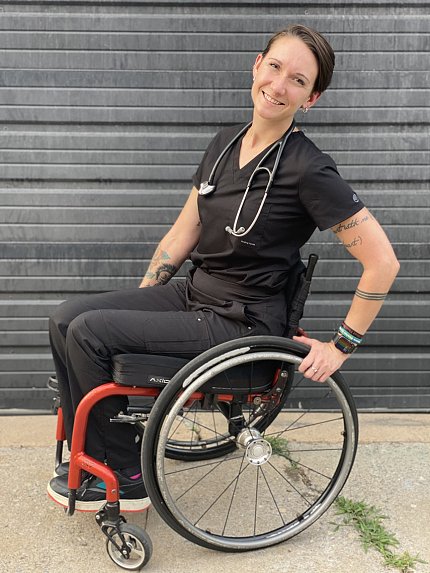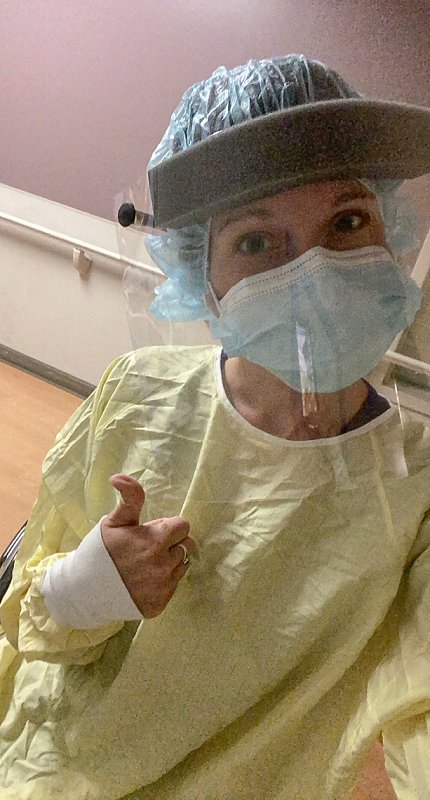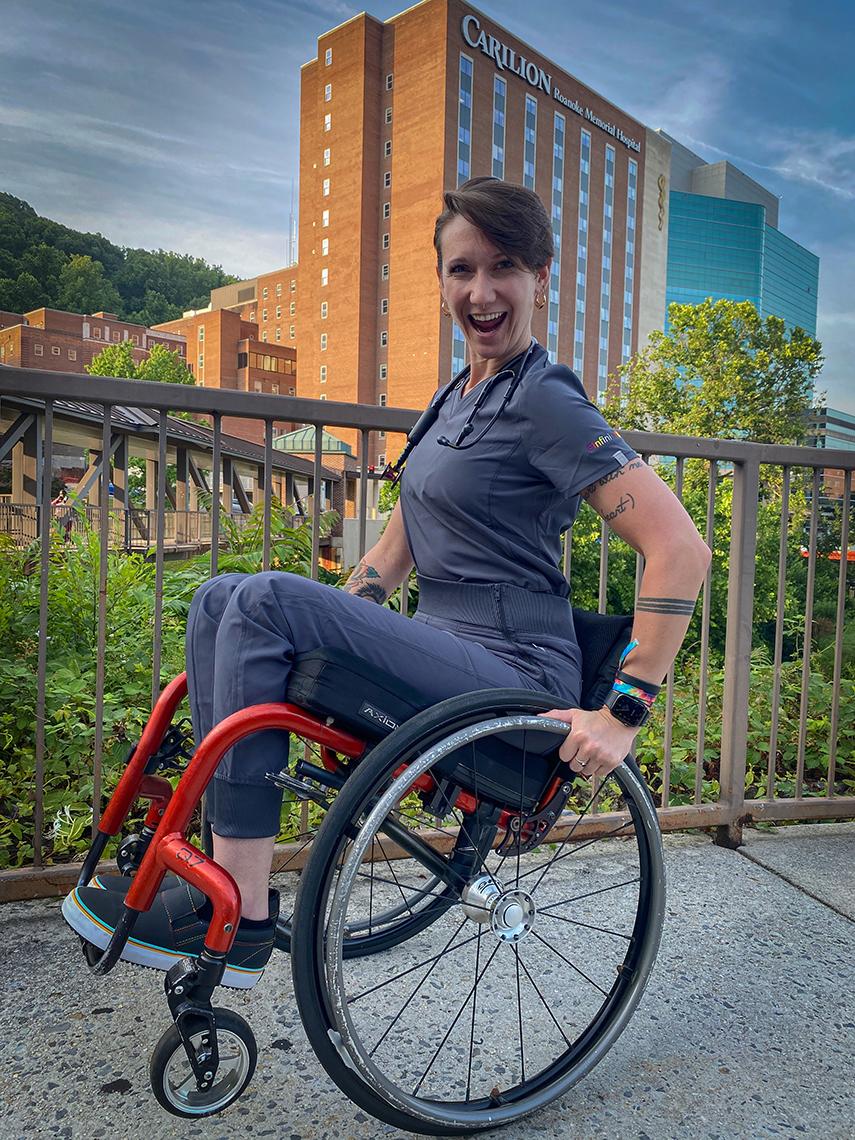Hire Health Care Workers with Disabilities, Says Mason

A lot of people with disabilities are health care workers. And many more are waiting for a chance, said Ryann Mason during the NIH’s National Disability Employment Awareness Month keynote address.
“Most individuals with disabilities are much more independent than people realize,” said Mason, a registered nurse and disability advocate. “There’s really nothing holding these individuals back.”
To her knowledge, she is the only nurse in a wheelchair in Virginia, where she lives. She was born with Ehlers-Danlos syndrome, a connective tissue disorder caused by abnormalities in the structure, production and/or processing of collagen. Symptoms include increased range of motion, loose, unstable joints that dislocate easily, and skin that bruises easily.
Growing up, she was in and out of the hospital with orthopedic injuries. Her mother thought she was just clumsy. When she was diagnosed at 16, her doctor told her she would soon be in a wheelchair.
She went to college to become a registered nurse. While she was a student, her injuries started to wear on her. For the first time in her life, she began using a cane.
After she graduated, Mason took a nursing position in an emergency room. She worked her way up through the ranks and thought about becoming a flight nurse. Unfortunately, although her career progressed, her symptoms got worse.
“Ehlers-Danlos syndrome is a degenerative disease,” she said. “All of those dislocations cause wear and tear on your joints over time.”
Her hips began to dislocate every time she took a step and she fell more often. Mason worried she would fall on a patient, so she became an acute care case manager. She was fitted for a wheelchair. Adapting to a new way of life was a big transition. Before she began using a wheelchair, she could hide her diagnosis if she wanted to.
“I was absolutely terrified,” she said. “I thought, ‘well, there goes my nursing career. I guess I’ll be in case management forever or something else away from the bedside.’”

When the Covid-19 pandemic began, she was frustrated. She couldn’t help her coworkers care for patients. One day, she went into a room and discovered that a patient had no pulse. She jumped out of her chair and gave the patient CPR. The experience spurred her on.
“I’m not done nor washed up,” Mason explained. “My nursing knowledge was not stored in my legs. It didn’t hit me until I had a patient who lost their pulse.”
Mason began volunteering as a nursing assistant in her hospital to prove she was still capable of doing the job. Once she knew she could, she found other nurses with disabilities.
“I became a board member for the National Organization of Nurses with Disabilities. I met other nurses in wheelchairs and found out that I’m not alone, and that this is something that I can accomplish,” she said.
She took a position as a staff registered nurse on a postpartum floor. When she was hired, her employer told her, “We’ve never done this before. We’ve never had a nurse on wheels but you seem very confident you have the skills.”
Before she was hired at her current hospital, she applied for 20 nursing jobs. She later found out hiring managers declined to interview her when they saw photos of her in a wheelchair on the internet.
In reality, Mason’s employer did not need to change much to accommodate her. The fire doors, for example were too heavy, so they had to be changed and she needed a desk chair to raise her high enough to see over a baby’s bassinet.
Many times, however, the people who are making the accommodations don’t realize they aren’t as accommodating as they could be. She recommends they must speak with the people receiving the accommodations to see if they are actually helpful.

“Until you put yourself in someone else’s shoes, you don’t realize how accessible a space is,” she said. “I did not have the slightest inkling to look for things like curb cuts on sidewalks, wider doorways to accommodate wheelchairs, the way doors [swing] open and closed or how heavy hospital bathroom doors are.”
There’s really nothing holding individuals with disabilities back from health care jobs—it just hasn’t been done before.
“The second I got my wheelchair, I thought I was unemployable and soon to be without my dream job as a nurse,” she concluded. “But that’s just not the case.”
Mason’s keynote address was hosted by the NIH Office of Equity, Diversity and Inclusion, in partnership with the National Institute of Nursing Research and the Clinical Center nursing department.
